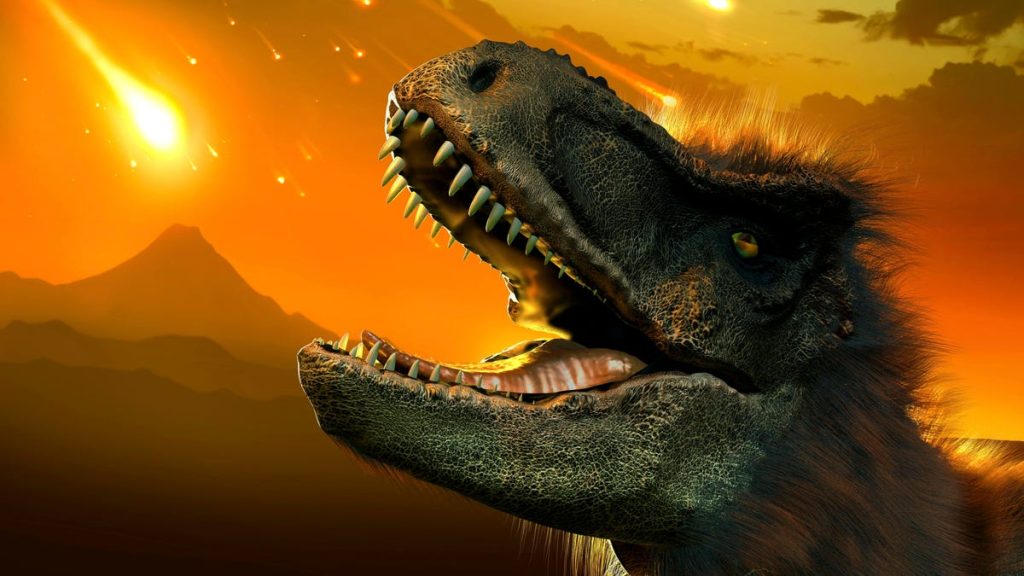Scientists have recently discovered evidence of a second asteroid impact that occurred around the same time as the one that killed the dinosaurs. This impact, located at the Nadir crater off the coast of Guinea in western Africa, provides new insights into the catastrophic event that wiped out the dinosaurs 66 million years ago. Led by geologist Uisdean Nicholson, a team of scientists used 3D seismic data to study the impact site in detail. They were able to determine the size of the asteroid, its angle of impact, and the effects it had on the seabed and underlying rock. The asteroid was estimated to be 450 to 500 meters in size, traveling at 20 kilometers per second, and striking the Earth at a 20- to 40-degree angle from the northeast.
The impact of the asteroid would have been incredibly violent, displacing water in the area and creating a series of tsunamis that swept into the Atlantic Ocean. The sediment from the impact would have rushed in to fill the hole created by the asteroid, causing a brim to form. The tsunamis were measured to have impacted the seafloor up to 20 kilometers away. Additionally, a massive earthquake would have caused damage below the seabed, including liquefaction of the underlying rock near the crater. Ionospheric disturbances and thermal radiation would have been caused by the impact, along with massive landslides as parts of the seafloor plateau crashed into the ocean. While impacts of this magnitude are rare, the study serves as a reminder of the catastrophic effects asteroid impacts can have on our planet.
The findings of this study shed light on the events surrounding the asteroid impact at the Nadir crater and its role in the mass extinction of the dinosaurs. The impact was determined to have occurred around the same time as the Chicxulub asteroid that is credited with killing the dinosaurs at the end of the Cretaceous period. While the Chicxulub asteroid was the primary cause of the dinosaurs’ extinction, the impact at the Nadir crater may have contributed to the extinction event as well. The detailed analysis of the impact site provides valuable insights into the scale and magnitude of the asteroid impact and its aftermath.
The study demonstrates the power of new technology, such as 3D seismic data, in uncovering the secrets of the Earth’s past. The level of detail captured by the study is unprecedented, allowing scientists to visualize the impact site in three dimensions and analyze the crater at all levels. By studying the anatomy of the asteroid impact at the Nadir crater, scientists can better understand the processes that occur during large-scale impacts and their effects on the environment. This information is crucial for improving our understanding of past extinction events and preparing for potential future asteroid impacts.
Overall, the discovery of the second asteroid impact at the Nadir crater adds another piece to the puzzle of the dinosaurs’ extinction. By piecing together the details of both asteroid impacts that occurred during that era, scientists can gain a more comprehensive understanding of the catastrophic events that reshaped the Earth’s history. The study highlights the importance of continued research and technological advancements in uncovering the mysteries of our planet’s past and preparing for potential threats from asteroid impacts in the future.












